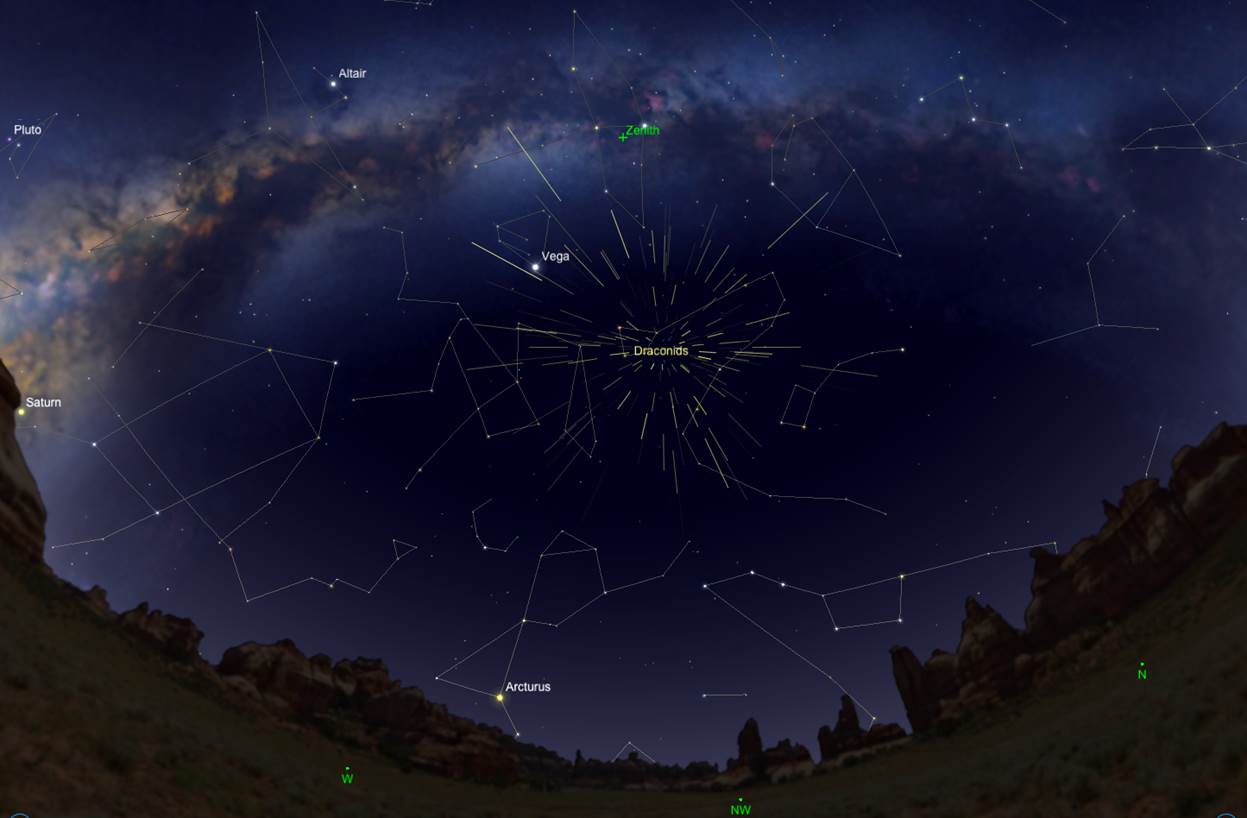Draconid meteor shower peaks this weekend under Hunter's Moon
Unfortunately, the light of the full Hunter's Moon will likely make viewing this shower difficult.

The Draconid meteor shower will peak on Sunday (Oct. 9), offering a chance to see fireballs appearing to originate from the dragon of the Draco constellation.
Unfortunately, this year's peak coincides with October's full Hunter's Moon, meaning conditions are far from ideal for catching a glimpse of the Draconids. Still, the radiant point (the point from which the meteors appear to originate) should be highest in the sky just before nightfall, around 5:00 p.m. local time, meaning it may be possible to see some of the meteor shower around dusk before the full moon rises.
Under ideal dark-sky conditions, you might be able to see up to 10 Draconid meteors per hour, according to EarthSky. Yet there have been years where hundreds of Draconids have been seen in a single hour, so even though conditions aren't ideal with the full moon, it might still be worth it to try and see some of the dragon's fireballs.
Related: Draco Constellation: Facts About the Dragon
The Draconids are sometimes referred to as the Giacobinids, because they are the remnants of the small periodic comet 21P/Giacobini-Zinner that was first discovered in 1900. The comet has a 6.6-year orbit and last made its closest approach to Earth in 2018 when it came closer than it had in 72 years. In 1985, the International Cometary Explorer, or ICE, became the first spacecraft to conduct a flyby of a comet when it observed 21P/Giacobini-Zinner, flying straight through the comet's tail.

Looking for a telescope to spot meteor showers like the Draconids? We recommend the Celestron Astro Fi 102 as the top pick in our best beginner's telescope guide.
The Draconids have been somewhat quiet in recent years, but produced some of the most spectacular displays in the 20th century in 1933 and 1946 when thousands of meteors per hour were seen, according to the U.K. Meteor Network.
To best see the Draconids or any other meteor shower, find a dark location and lean or lie back to get as wide a view of the sky as possible. Your eyes will take around 30 minutes to adjust to the dark.
Get the Space.com Newsletter
Breaking space news, the latest updates on rocket launches, skywatching events and more!
If you want advice on how to photograph the Draconids or any other meteor shower, be sure not to miss our how to photograph meteors and meteor showers guide and if you need imaging gear, consider our best cameras for astrophotography and best lenses for astrophotography.
Follow Brett on Twitter at @bretttingley. Follow us on Twitter @Spacedotcom or on Facebook.
Join our Space Forums to keep talking space on the latest missions, night sky and more! And if you have a news tip, correction or comment, let us know at: community@space.com.

Brett is curious about emerging aerospace technologies, alternative launch concepts, military space developments and uncrewed aircraft systems. Brett's work has appeared on Scientific American, The War Zone, Popular Science, the History Channel, Science Discovery and more. Brett has English degrees from Clemson University and the University of North Carolina at Charlotte. In his free time, Brett enjoys skywatching throughout the dark skies of the Appalachian mountains.









